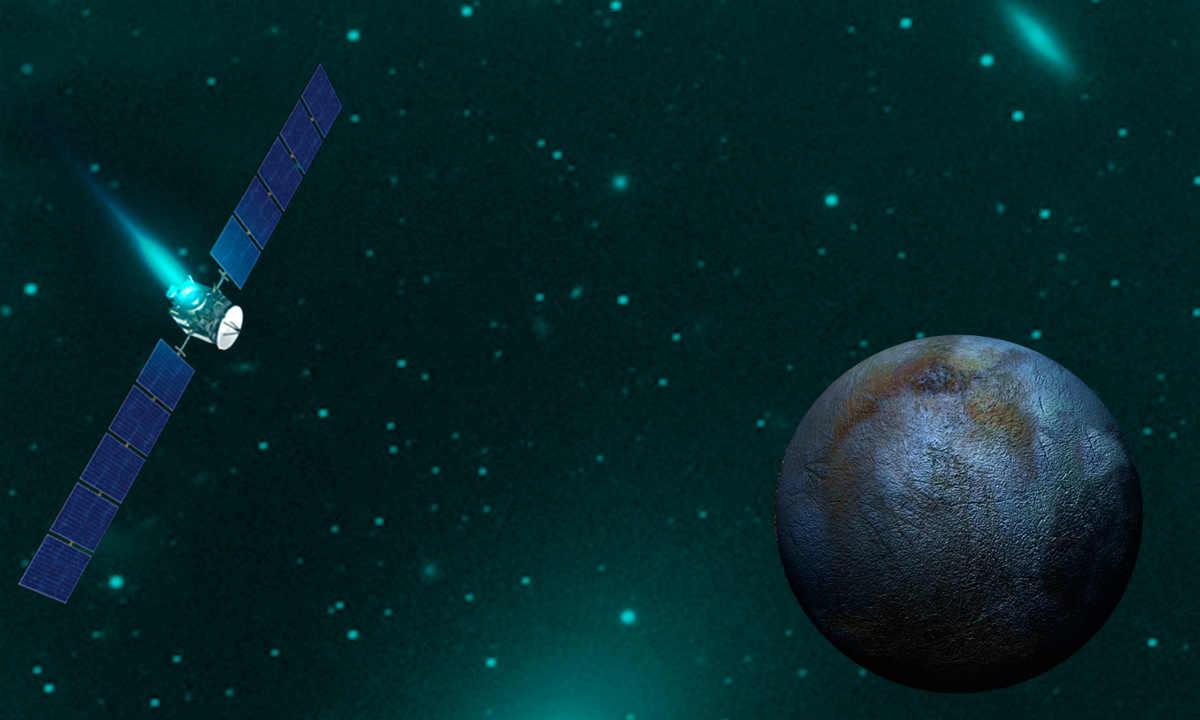Safe Mode Slows Dawn Mission's Progress to Ceres

NASA's Dawn spacecraft has resumed normal operations after a high-energy particle event forced the mission to enter safe mode, knocking its ion drive offline. Although mission managers deduced the source of the problem and restarted its propulsion systems, the unexpected hiccup will likely delay Dawn’s arrival at dwarf planet Ceres.
PHOTOS: Psychedelic Landscapes of Asteroid Vesta
Safe mode was triggered on Sept. 11 and it is thought the same phenomenon that triggered a safe mode three years agoduring Dawn's approach to giant asteroid Vesta is to blame for this incident. A high-energy cosmic ray hit the spacecraft's ion drive electronics, disabling it.
In addition to the ion drive glitch, Dawn's main antennae that the spacecraft uses to communicate with Earth was also knocked offline, meaning engineers had to decipher the problem using Dawn’s secondary, lower bandwidth antennae. [How NASA's Dawn Mission Works (Infographic)]
"This anomaly presented the team with an intricate and elaborate puzzle to solve," said Robert Mase, Dawn project manager at NASA’s Jet Propulsion Laboratory (JPL) in Pasadena, Calif.
NEWS: Water Plume 'Unequivocally' Detected at Dwarf Planet Ceres
"We followed the same strategy that we implemented three years ago to recover from a similar radiation strike — to swap to one of the other ion engines and a different electronic controller so we could resume thrusting quickly," said Dawn Mission Director and Chief Engineer Marc Rayman also of JPL. “We have a plan in place to revive this disabled component later this year.”
Get the Space.com Newsletter
Breaking space news, the latest updates on rocket launches, skywatching events and more!
Normal operations recommenced on Sept. 15, but a valuable few days of thrusting had been lost, meaning Dawn will reach Ceres later than planned.
Ion drives work by accelerating charged particles through an electric field, providing a tiny amount of thrust. Though the thrust is minuscule compared with conventional rocket engines, ion drives use tiny quantities of fuel, meaning they can operate for years. The "slow-yet-steady" approach means that Dawn can have an extended mission exploring our solar system’s asteroid belt, visiting the two largest objects in the belt years apart.
Now on its way to Ceres, mission managers expect Dawn to enter orbit by April 2015, a month later than planned.
This article was provided by Discovery News.
Join our Space Forums to keep talking space on the latest missions, night sky and more! And if you have a news tip, correction or comment, let us know at: community@space.com.
Ian O'Neill is a media relations specialist at NASA's Jet Propulsion Laboratory (JPL) in Southern California. Prior to joining JPL, he served as editor for the Astronomical Society of the Pacific‘s Mercury magazine and Mercury Online and contributed articles to a number of other publications, including Space.com, Space.com, Live Science, HISTORY.com, Scientific American. Ian holds a Ph.D in solar physics and a master's degree in planetary and space physics.









